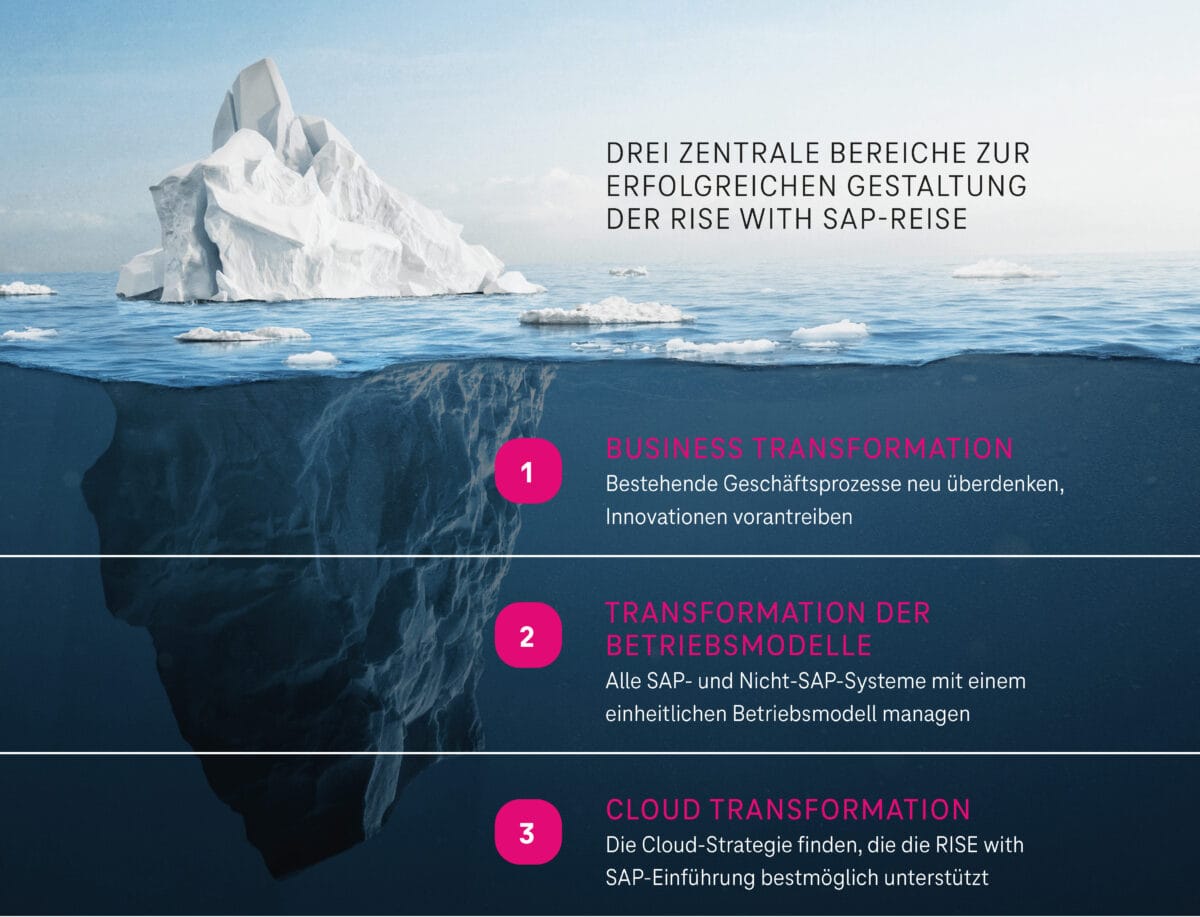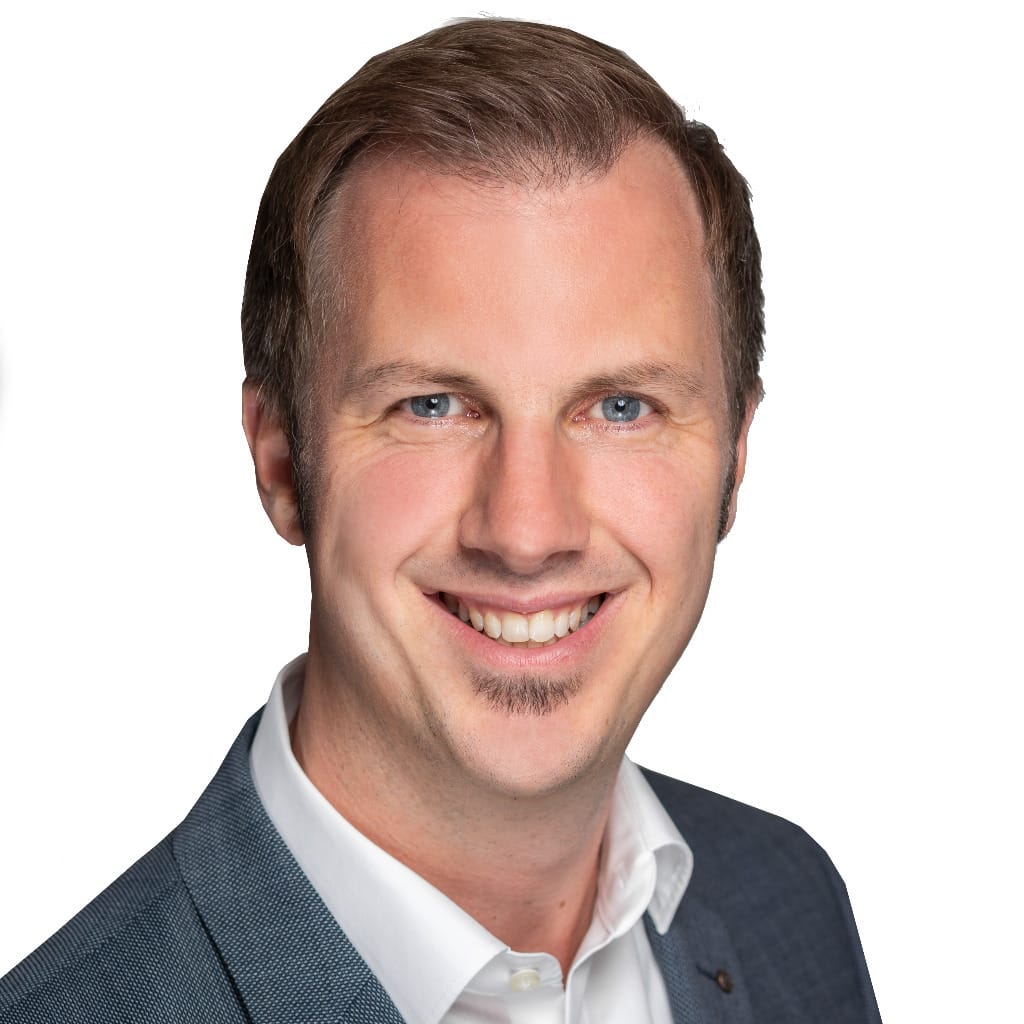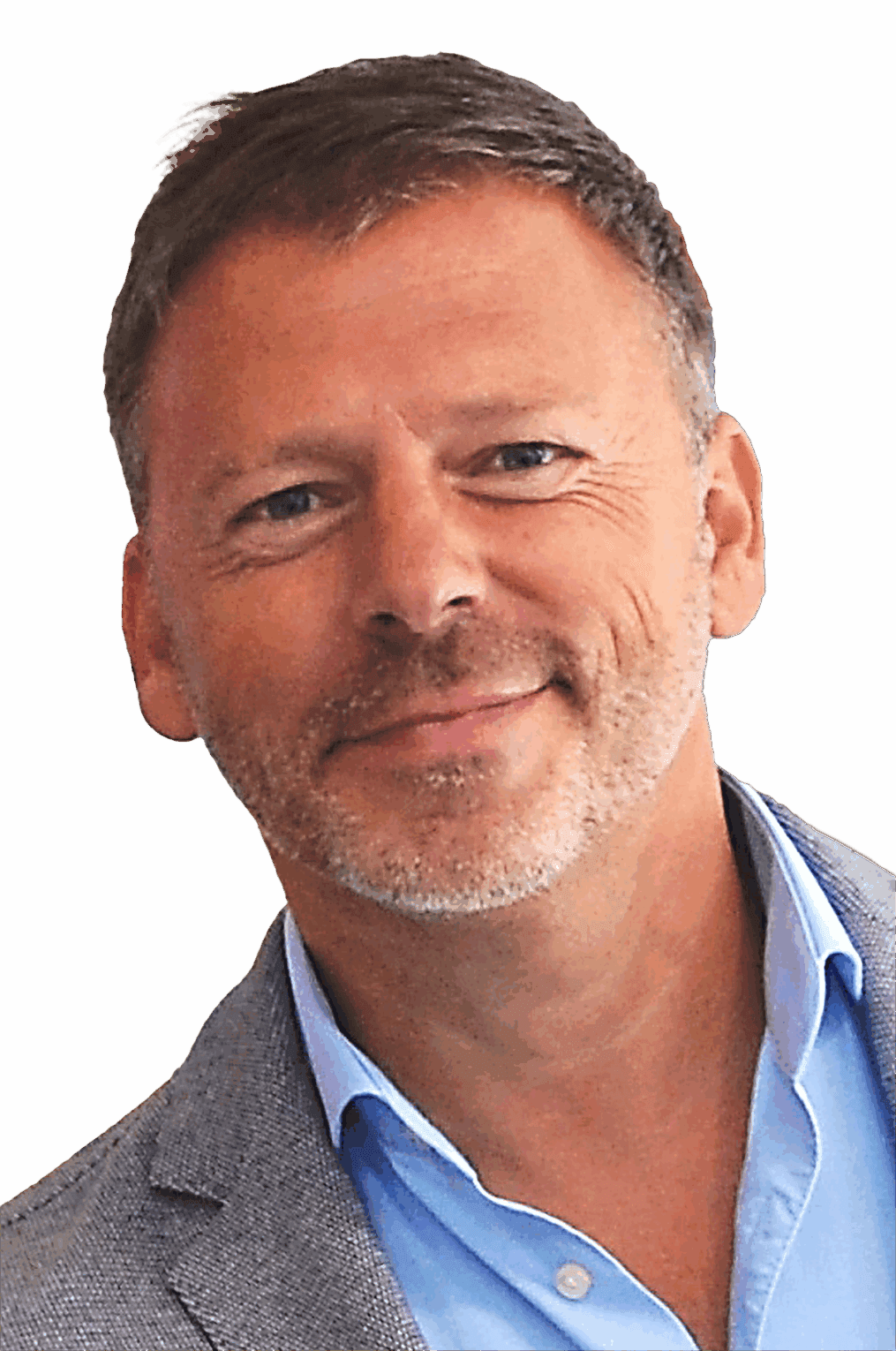Cloud ERP Transformation—Overcoming Complexity, Seizing Opportunities


SAP and market analysts agree: Rise with SAP is here to stay. But what do existing SAP customers think? While some are still sceptical about the offer and want to wait and see how the market develops, more and more customers are now recognizing the opportunities for future-proof business processes and innovations. According to the latest DSAG investment report, almost half of the companies surveyed in the DACH region are already using or planning to use Rise with SAP. In 2024, this figure was only 16 percent. In addition, only 23% of respondents now state that they do not intend to use Rise with SAP, compared to 61% in the previous year. Strong figures that speak in favor of a transformation with Rise with SAP.

Companies are well advised to consider and take into account all levels - including those below the "water surface".
Rise: Customer Journeys
Basically, Rise - and Grow with SAP - are transformation paths, so-called customer journeys. The license package includes the cloud ERP product itself, the technical managed services and the infrastructure. Customers can choose between the S/4 Hana Private (SAP Cloud ERP Private) and the Public Cloud Edition (SAP Cloud ERP). However, this seemingly simple formula conceals complex challenges: The introduction of Rise requires a profound transformation on several levels within the company.
But the license model is just the tip of the iceberg. The true potential of Rise lies under
of the user interface and makes it possible to optimize business processes, become more agile and drive innovation. To fully exploit this potential, companies need to initiate a transformation process in the following three dimensions: migration to the cloud, adaptation of the operating model and a comprehensive business transformation.
Cloud transformation solved
Rise with SAP aims to accelerate cloud ERP adoption. As IT landscapes are often complex, cloud migration usually involves more than just a single SAP system. Customers are obliged to migrate all SAP solutions included in the Rise contract to the cloud-based SAP successor products. This can have far-reaching consequences: If a customer signs a Rise contract that includes various SAP applications and solutions, the cloud transformation affects not only the SAP ECC systems, but also SolMan, for example, which must be brought onto cloud ALM. Or SAP HCM, which needs to be mapped in SuccessFactors.
Moreover, the transformation is not just limited to the cloud ERP, but also affects the infrastructure. While the standard Rise package provides for migration to a hyperscaler, the tailored option with T-Systems offers significantly more flexible options. For example, the transformation can take place on the private cloud provided by T-Systems from German data centers. This opens up opportunities for hybrid models that combine public and private clouds. Sensitive data or workloads with high security requirements can remain in the private cloud. This enables customers to achieve digital sovereignty within Rise with SAP. Non-critical data or development and test systems, on the other hand, can be migrated to a hyperscaler.

"Thorough preparation is the key to the success of the Rise transformation. It can shorten the project duration and significantly reduce costs."
Frank Scharpenberg,
Vice President and Head of SAP Global Business Practice SAP,
T-Systems
European Cloud
In times of geopolitical uncertainty, this flexibility is becoming increasingly important. US hyperscalers are not an option for all companies when it comes to processing sensitive data. T-Systems offers a European alternative with a Rise-certified private cloud that meets the highest security standards and certifications. For SAP customers, this means Transformation while maintaining digital sovereignty.
Operating model in transition
With Rise with SAP, the operating model is changing fundamentally: responsibility for operating the Rise systems is moving from internal data centers or previous managed service providers directly to SAP. As a premium supplier for Rise, T-Systems will provide comprehensive technical managed services: "Thanks to our many years of experience and expertise from around 1000 SAP projects worldwide every year, we guarantee reliable and secure services. And this with a standardized operating model across system boundaries," says Frank Scharpenberg, Vice President and Head of SAP Global Business Practice SAP at T-Systems.
IT is more than SAP and Rise
Naturally, the focus at SAP is primarily on SAP solutions. However, the IT world of most SAP customers is more complex and also consists of non-Rise and non-SAP systems that they need to support their business processes. This is where T-Systems takes a holistic approach: as an experienced SAP partner, the company supports Rise, Non-Rise and non-SAP systems from a single source. "We operate the entire IT stack with end-to-end SLAs across system boundaries with a dedicated team for our customers. Regardless of whether Rise and Non-Rise are of interest to the customer," says Tom Bartmann, Vice President, SAP Sales at T-Systems. This integrated approach makes it possible to effectively master the challenges of the complex SAP world.

"Those who only use their existing SAP landscape
into Rise, gives away enormous
Optimization potential."
Tom Bartmann,
Vice President, SAP Sales,
T-Systems
Business Transformation
The introduction of Rise offers companies far more than just a technical cloud migration. "Anyone who only migrates their existing SAP landscape to Rise is wasting enormous optimization potential," says Bartmann. Instead, customers should use Rise as a catalyst for a comprehensive business transformation.
The greenfield approach opens up promising opportunities: SAP standards and best practices make it possible to implement clean-core concepts, automate processes and say goodbye to costly in-house development.
developments. And if the customer does want individual enhancements beyond the standards in the core ERP, these can be implemented with the SAP Business Technology Platform (BTP).
In this way, companies can use the SAP transformation to modernize business processes, integrate AI solutions such as SAP Joule and position themselves for the future. They rely on standardization and automation, which leads to more efficient processes, cost savings and a reduction in the workload of employees.
Another advantage is that companies that rely on the SAP S/4 Hana Private Cloud Edition today and pursue a consistent clean-core strategy pave the way for a possible switch to the public cloud at a later date. It is important to note that not all systems necessarily have to be migrated using the greenfield approach. In the course of planning, individual paths should also be considered depending on the system. Some SAP ECC systems can be sensibly migrated to Rise using the brownfield approach and adapted later if necessary.
Via the Business Suite
The SAP Business Suite plays an important role in the transformation journey with Rise in the three dimensions described. It has been continuously developed by SAP in recent years and has gained strategic importance with the update in February 2025 and the "Suite First" approach. Cloud ERP and SAP BTP form the basis of the Business Suite. The Business Data Cloud (BDC) acts as a layer in between. It accesses SAP and non-SAP applications and simplifies integration with other SAP or third-party systems. The BDC is particularly relevant in the context of AI applications. Effective business AI functions require access to structured and unstructured data from various internal and external sources. One example: ERP data alone is not enough for precise sales forecasts. Information from the CRM system and global market trends are just as crucial. The Business Data Cloud makes this holistic data integration possible.
Preliminary studies for the Rise Journey
Underestimating the complexity of an SAP transformation can cost companies dearly. Pre-projects are an indispensable tool for successfully shaping the Rise journey. "Thorough preparation is the key to the success of the Rise transformation. It can shorten the project duration and significantly reduce costs," emphasizes Frank Scharpenberg.
In the case of unprepared transformations, however, individual project steps can quickly become two to three times more expensive. Scharpenberg advises against saving money on preliminary studies.
"A serious preliminary study provides the necessary transparency and depth of detail and quickly pays for itself through smoother processes and avoided pitfalls."
Interactions
A thorough preliminary study is also essential because SAP Rise and S/4 transformation, cloud migration and changes to the operating model are closely interwoven. All areas must be carefully coordinated, as there are numerous dependencies. A well-founded preliminary study uncovers these interactions and enables effective planning of the entire transformation journey. Companies also often overestimate their organizational readiness for transformation.
Change Agents
Here, the preliminary study uncovers the discrepancies between the current organizational structure and the planned journey. As part of the study, T-Systems organizes several workshops with all stakeholders, for example from management, the specialist departments and the user group. It makes sense to appoint fixed process owners and, in international companies, global process owners. It is just as important to define a key user organization. The transformation and therefore also the change process should be accompanied by change agents who follow a clear change strategy defined as part of the preliminary study. The findings from the workshops lead to specific recommendations, for example: Future architecture, the most suitable migration path, added value, time planning, necessary preparatory work and suitable operating models. With this overall picture, companies can make the necessary preparations - from system updates to data cleansing. Equipped in this way, the Rise transformation can be tackled with confidence.
S/4 in the healthcare sector
This is also shown by the following practical example: A German provider of social and healthcare facilities was facing the SAP S/4 Hana transformation.
T-Systems carried out a comprehensive preliminary study, ranging from process analysis to custom code scanning. The result: a customized strategy that combined technical innovations with business opportunities, including a group-wide reporting system.
Ready for the transformation
In the run-up to the Rise transformation, preliminary projects help, among other things
- define the "big picture" and the future SAP strategy,
- create a realistic and coordinated project schedule,
- estimate the costs associated with the project,
- to design the future architecture,
- identify necessary preparatory activities
- and ultimately develop a clear transformation roadmap.
The phases of a preliminary study
- Project initialization, preparation of system scans and planning of workshops
- Tool-supported analysis of the SAP landscape, for example with SAP on-board tools such as SAP Readiness Check, Abap Test Cockpit and Signavio Process Insights
- Joint customer workshops with business and IT: Technical workshops focus on individual developments, interfaces, clean core and the compatibility of add-ons and the target architecture.
Functional workshops are used to analyze current business processes and their weak points as well as to identify possible solutions and innovation potential. These are supplemented by interdisciplinary workshops, for example on the introduction of the business partner or the optimization of master data management. Innovation workshops pay into LeanIX or the Business Suite with BDC and Business AI.
Source: T-Systems






